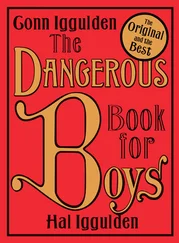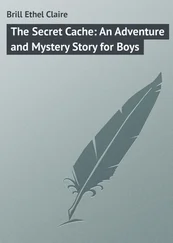Robert Robert - Scouting for Boys
Здесь есть возможность читать онлайн «Robert Robert - Scouting for Boys» весь текст электронной книги совершенно бесплатно (целиком полную версию без сокращений). В некоторых случаях можно слушать аудио, скачать через торрент в формате fb2 и присутствует краткое содержание. Жанр: Старинная литература, und. Описание произведения, (предисловие) а так же отзывы посетителей доступны на портале библиотеки ЛибКат.
- Название:Scouting for Boys
- Автор:
- Жанр:
- Год:неизвестен
- ISBN:нет данных
- Рейтинг книги:3 / 5. Голосов: 1
-
Избранное:Добавить в избранное
- Отзывы:
-
Ваша оценка:
- 60
- 1
- 2
- 3
- 4
- 5
Scouting for Boys: краткое содержание, описание и аннотация
Предлагаем к чтению аннотацию, описание, краткое содержание или предисловие (зависит от того, что написал сам автор книги «Scouting for Boys»). Если вы не нашли необходимую информацию о книге — напишите в комментариях, мы постараемся отыскать её.
Scouting for Boys — читать онлайн бесплатно полную книгу (весь текст) целиком
Ниже представлен текст книги, разбитый по страницам. Система сохранения места последней прочитанной страницы, позволяет с удобством читать онлайн бесплатно книгу «Scouting for Boys», без необходимости каждый раз заново искать на чём Вы остановились. Поставьте закладку, и сможете в любой момент перейти на страницу, на которой закончили чтение.
Интервал:
Закладка:
I received a secret letter from another friend once. He had written it in the Hindustani language, but in English lettering. Anybody else studying it would have been quite puzzled about the language in which it was written, but to me it was clear as daylight.
When we sent letters out from Mafeking during the siege, we gave them to natives, who were able to creep out between the Boer outposts. Once through the line of sentries, the Boers mistook the natives for their own, and took no further notice of them. They carried the messages in this way: The letters were written on thin paper, and half a dozen or more were crumpled up tightly into a little ball, then rolled up into a piece of lead paper, such as tea is packed in. The native scout would carry a number of these little balls in his hand, or hanging round his neck loosely on strings. If he saw he was in danger of being captured by an enemy, he would notice landmarks round about him and drop all the balls on the ground, where they looked like small stones. Then he would walk boldly on until accosted by the enemy, who, if he searched him, would find
nothing.
The messenger would wait around for perhaps a day or two, until the coast was clear, then come back to the spot where the landmarks told him the letters were lying. “Landmarks”, you may remember, mean any objects—trees, mounds, rocks, or other details—which act as sign-posts for
a Scout who notices and remembers them.
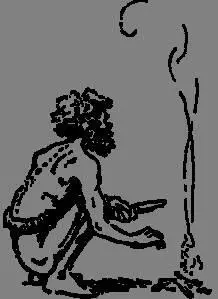
The natives of Australia often used signal fires to send messages.
SIGNALLING
Signalling is well worth knowing. It is good fun to be able to signal to your pal across the street without other people un- derstanding what you are talking about. But I found it really valuable for communicating with a friend out in the wild— once when we were on separate mountains, and another time when we were on opposite sides of a big river, and one of us had important news to communicate.
Signal Fires
Scouts of all countries use fires for signalling purposes—smoke fires by day and flame fires by night.
Smoke Signals—Three big puffs in slow succession mean “Danger”. A succession of small puffs means “Rally, come here”. A continued column of smoke means “Halt”.
To make a smoke fire, light your fire in the ordinary way with plenty of thin dry sticks and twigs, and as soon as it is burning well, put on green leaves and grass, or damped hay, to make it smoke.
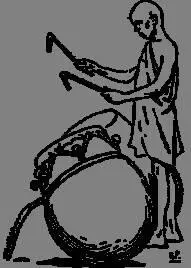
Special drums are used in Africa to signal from village to village.
Cover the fire with a damp blanket. Take off the blanket to let up a puff of smoke, then put it over the fire again. The size of the puff depends on how long you lift the blanket. For a short puff, hold it up while you count two, then replace the blanket while you count eight. For a long puff hold up the blanket for about six seconds.
Flare Signals—Long or short flares at night mean the same as the above smoke signals by day.
You light a flare fire with dry sticks and brushwood, so as to make as bright a flame as possible.
Two Scouts hold up a blanket in front of the fire, that is, between it and those to whom you are signalling, so that your friends do not see the flame till you want them to. Then you drop the blanket while you count two for a short flash, or six for a long one, hiding the fire while you count four between each flash.
Sound Signals
In the American Civil War, Captain Clowry, a scout officer, wanted to give warning to a large force of his own army that the enemy was going to attack unexpectedly during the night. But he could not get to his friends because there was a flooded river between them which he could not cross, and a rain storm was raging.
What would you have done if you had been Captain Clowry?
A good idea struck him. He got hold of an old railway engine that was standing near him. He lit the fire and got up steam in her, and then started to blow the whistle with short and long blasts in the Morse alphabet. Soon his friends heard and understood, and answered back with a bugle. He then spelt out a message of warning to them, which they read and acted upon. And so their force of twenty thousand men was saved from surprise.
Certain tribes of natives in Africa signal news to each other by means of beats on a drum. Others use wooden war gongs.
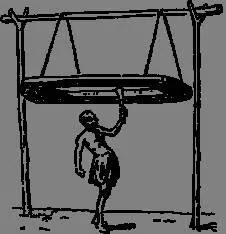
Here is another kind of signal
“drum” used by natives of Africa.
Morse and Semaphore Signalling
Every Scout ought to learn the Morse code for signalling. It can be used to send messages by “dots” and “dashes” for some distance by flags; or by sounds, such as bugle; or by flashes (heliograph or electric light).
Semaphore signalling, which is done by waving your arms at different angles to each other, is even easier to learn. Here you form the different letters by putting your arms at different angles. Be sure to make these angles correctly. The diagram shows the signs as they appear to a
“reader”. It may look complicated in the picture, but when you come to work it out you will find it is very simple.
The sender must always face the station he is sending to. He gets the attention of the receiving station by the calling up signal VE-VE-VE or AAAA. When the receiving station is ready, it gives the carry on signal K. If it is not ready, it sends Q, meaning “Wait”.

The MORSE code letters and numerals are made up of dots and dashes.
When the receiving station has read a word correctly, it sends E or T (for Morse), or C or A (for
Semaphore). If any word is not answered, the sending station knows that the receiving station
has not read it and so repeats it until it is answered.
If you make a mistake, send the erase signal of 8 E’s, and then repeat the word.
If you are going to send numbers, use the regular Morse numerals, but in Semaphore spell the numbers out in letters. They will be checked by being repeated back by the receiving station.
End of word is indicated by a short pause in light and sound signalling, or, with flags, by bringing them down to the front.
You finish a message by sending the end of message signal AR. The receiving station answers with the message received signal R if the message has been received correctly.
Once you know the Morse or Semaphore alphabet, all you need is practice. A Scout is not asked
to send long sentences, or to send over long distances, or at a high speed. All that is expected of
you is that you should know your alphabet and read and send simple sentences or words really well. Do your best, so that when it comes to sending across a big field, or from hill to hill, your message will be easy to read.
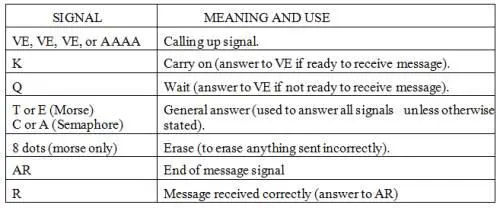

Semaphore letters are made by holding two flags at different angles.
Читать дальшеИнтервал:
Закладка:
Похожие книги на «Scouting for Boys»
Представляем Вашему вниманию похожие книги на «Scouting for Boys» списком для выбора. Мы отобрали схожую по названию и смыслу литературу в надежде предоставить читателям больше вариантов отыскать новые, интересные, ещё непрочитанные произведения.
Обсуждение, отзывы о книге «Scouting for Boys» и просто собственные мнения читателей. Оставьте ваши комментарии, напишите, что Вы думаете о произведении, его смысле или главных героях. Укажите что конкретно понравилось, а что нет, и почему Вы так считаете.

![Роберт Баден-Пауэлл - Искусство скаута-разведчика[Scouting for boys ; Искусство Разведки для мальчиков]](/books/70572/robert-baden-pauell-iskusstvo-skauta-thumb.webp)



